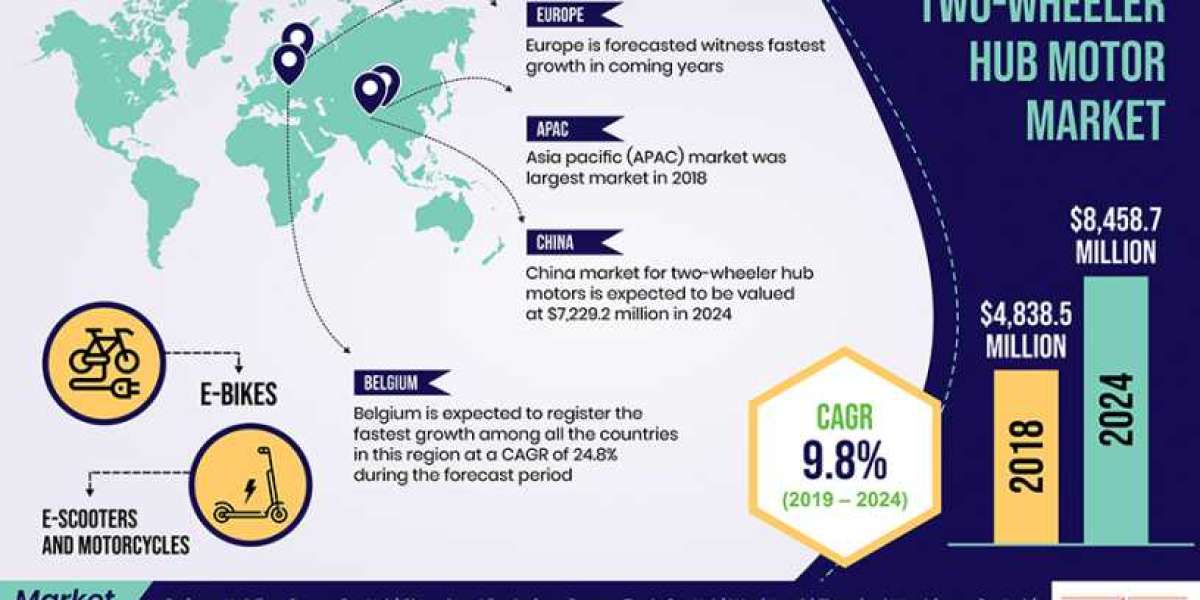In 2019, there are more than 350 million electric two- and three-wheelers in operation around the world, according to the Global EV Outlook 2020 report of the International Energy Agency (IEA). Electric scooters and motorcycles are fast becoming the preferred alternative to those with an internal combustion engine (ICE) and even cars (for shorter journeys). Since electric vehicles (EV), especially battery electric vehicles (BEV), don’t contain an ICE, they release no operational emissions, which is why they are key to solving the air pollution and other associated problems, such as climate change and global warming.
This is why PS Intelligence expects the two-wheeler hub motor market value to grow from $4,838.5 million in 2018 to $8,458.7 million by 2024, at a 9.8% CAGR between 2019 and 2024. This is because the motor is the most-essential component of any EV, along with the battery. In electric two-wheelers, the hub motor is integrated directly on the wheel axle, which negates the requirement for a gear system and chain drive. This not only means a simpler transmission assembly, but also higher efficiency, as the power loss that happens between the gear system and the chain is eliminated.
Around the world, governments are offering substantial benefits to people manufacturing and purchasing EVs. These include purchase subsidies, low-tax land for setting up manufacturing plants, no registration and licensing fees, and even dedicated lanes on roads. These initiatives are important because EVs are more expensive than ICE-based automobiles owing to their newer technology, which includes a higher number of electronic circuits, systems, and sensors. Moreover, the EV battery, especially one with higher power and capacities, is expensive, which makes the overall automobile costly.
Thus, with the government support aimed at making EVs affordable for the masses, the demand for two-wheeler hub motors will increase. Presently, DC motors are integrated into two-wheelers in higher numbers than AC motors because the former are more efficient and easier to maintain. Additionally, DC motors allow for quick starting and stopping and better speed variation and produce a higher starting torque. Moreover, DC motors offer higher speeds, which is a key factor that encourages people to purchase electric two-wheelers.
This is clear from the fact that though less-than-0.5-kilowatt (kW) motors were more popular in the past, the demand for those with a power output of more than 4 kW will increase the fastest in the coming years. Seeing this, automakers have already started launching higher-power and higher-maximum-speed electric scooters, bikes, and motorcycles to lure the youth. For instance, in 2018, Zero Motorcycles announced plans to launch Zero DS ZF7.2, a dual-sport electric motorcycle with a motor that is 35% more powerful and a speed that is 8% higher than those of its previous models.
Asia-Pacific (APAC) has been the most-productive two-wheeler hub motor market till now, as China is the largest producer of automobiles and their components in the world. Moreover, as per the IEA, of the 350 million electric two- and three-wheelers running on the world’s roads in 2019, 25% were in China alone! This is because China is notorious for its air pollution and smog, which have forced the People’s Government to take initiatives to reduce the amount of GHG emissions from vehicles.
Hence, as the sale of electric two-wheelers increases, so will that of hub motors.








